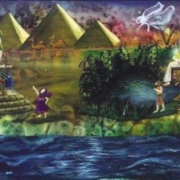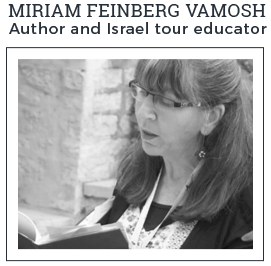Faith in Frightening Times: Counting of the Omer
Faith in Frightening Times: Counting of the Omer
“Count Your Blessings”
Don’t we all try to count our blessings every day? We sure do! In Jewish tradition there’s even a special time to do so. It’s a period that comes from the very special agricultural traditions of the Holy Land and it’s called “the Counting of the Omer.” An omer is an ancient quantity of grain equal to about 6 gallons. The origins of the count can be found in Leviticus 23:9–16 (and Deuteronomy 16:9). Here’s what it says in Leviticus: “When you enter the land which I am giving to you and reap its harvest, you shall bring the first sheaf of your harvest to the priest… the priest shall wave it on the day after the sabbath…And you shall count for yourselves from the day after the Sabbath, from the day that you brought the sheaf of the wave offering: seven Sabbaths shall be completed. Count fifty days to the day after the seventh Sabbath; then you shall offer a new grain offering to the LORD. ”
When this count should begin was, like everything else, it seems, a matter of controversy in Jesus’ day. Finally, the ancient tradition prevailed that the count was to begin on the first day after the Passover holiday, and continue for 49 days (seven weeks). On the 50th day, the Feast of Weeks is celebrated. That’s none other than Pentecost, mentioned by name in Acts 2 as the holiday when the speaking in tongues took place.
We all know that there’s anticipation in counting. Whether it’s my granddaughter going down the sliding board at the end of a joyful “one-two-three – wheee!” to the fateful countdown before a space shuttle takes off and lots of other examples I’m sure you can think of. There’s a kind of tension in that count too. And that’s where we come to the agricultural traditions of the Holy Land.
“For, lo, the winter is past, the rain is over and gone; The flowers appear on the earth; the time of singing is come, and the voice of the turtle is heard in our land; The fig-tree putteth forth her green figs, and the vines in blossom give forth their fragrance. Arise, my love, my fair one, and come away.” (Song of Songs 2:11-13) We have rainless summers here in the Holy Land. On the other hand, especially in the mountains, where I live, we can have very rainy (and sometimes even snowy) winters.
But what happens between rain and shine?
It’s that in-between time, between the rainy season and the dry season, which worries farmers, and not only in the Holy Land or in ancient times. But in the Holy Land, it’s the time between Passover and Pentecost, when the seasons haven’t quite settled down yet. It’s the time when an “unseasonable” rainstorm can knock the fruit and grain, at a critical stage in their development, off the stalks, ancient farmers prayerfully counted each day that brought them closer to a successful harvest. As I did research for my book Food in the Bible: From Adam’s Apple to the Last Supper, I loved learning about what the ancient sages taught about the various spring harvests – barley, wheat and summer fruits. Since barley was ready for harvest at Passover and wheat at Pentecost, this meant that at the barley harvest, wheat was at a fragile stage, and during the Pentecost, when the wheat was to be harvested, the summer fruits were at a critical stage. The ancient Jewish sages said the next of these harvests would be blessed if you gave the “first fruits” of the previous one as offering in the Temple. But I’ve also been taught that we are blessed if we’ve been able to watch our spiritual p’s and q’s all the time – no matter what the weather!
At the end of the counting of the Omer comes Pentecost, as commanded in Lev. 23:15–16 and Deut. 16:9. Giving it added meaning, the sages taught that Moses told the Children of Israel that they would be given the Torah days after their liberation from slavery. And so the people began to count the days and sure enough, the Ten Commandments came down on that day!
May this season be a blessing to you and yours.












Trackbacks & Pingbacks
[…] of languages in Jerusalem. In the Hebrew Scriptures, Shavuot, the end of the period known as the Counting of the Omer, has come to mark the giving of the Ten Commandments to Moses at Sinai. It’s also is the time we […]
Comments are closed.